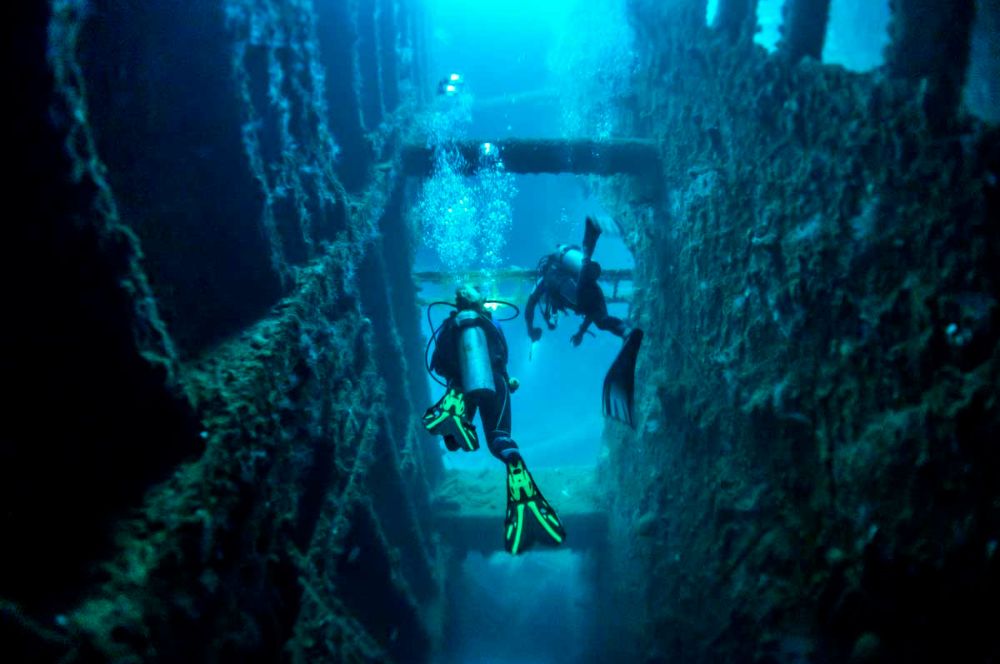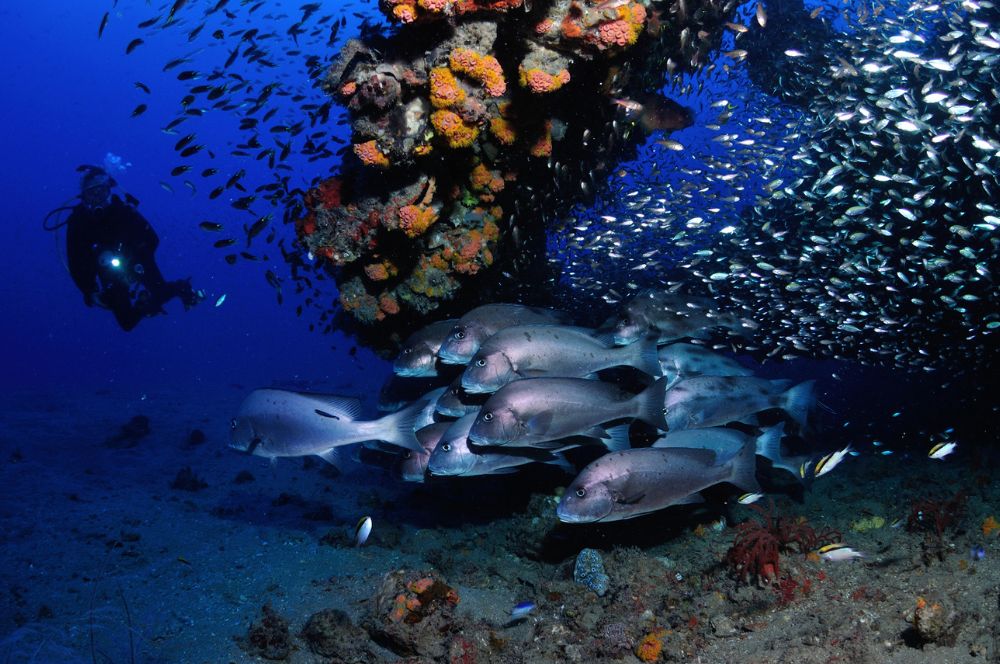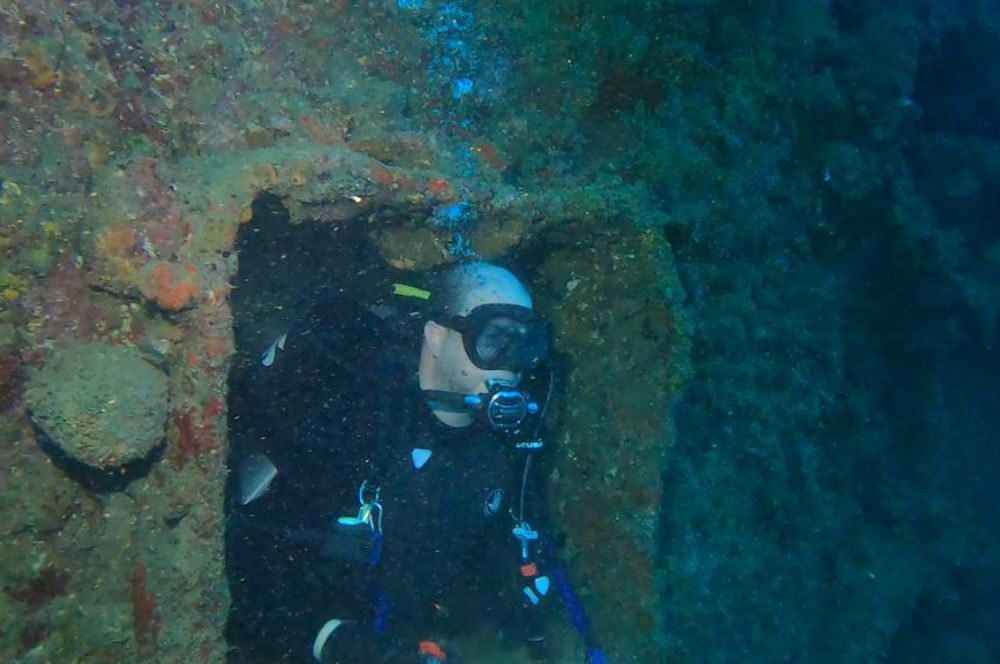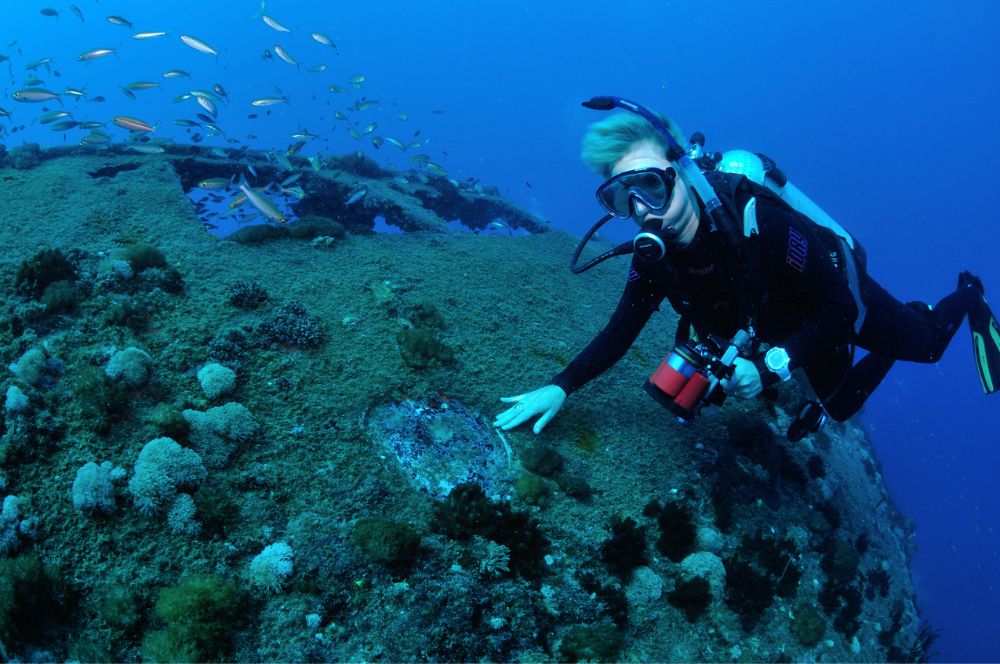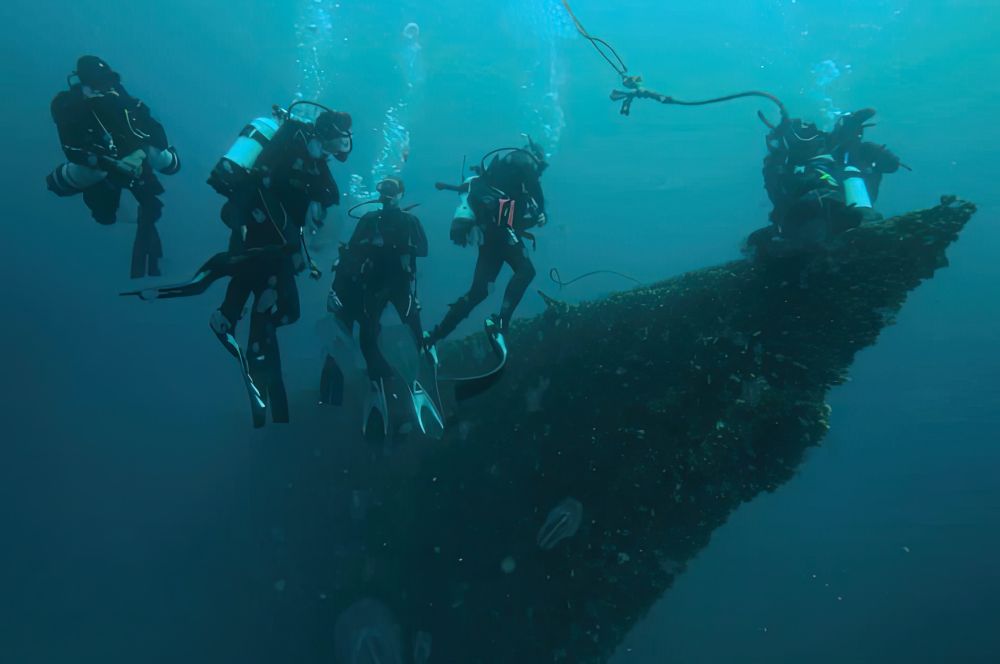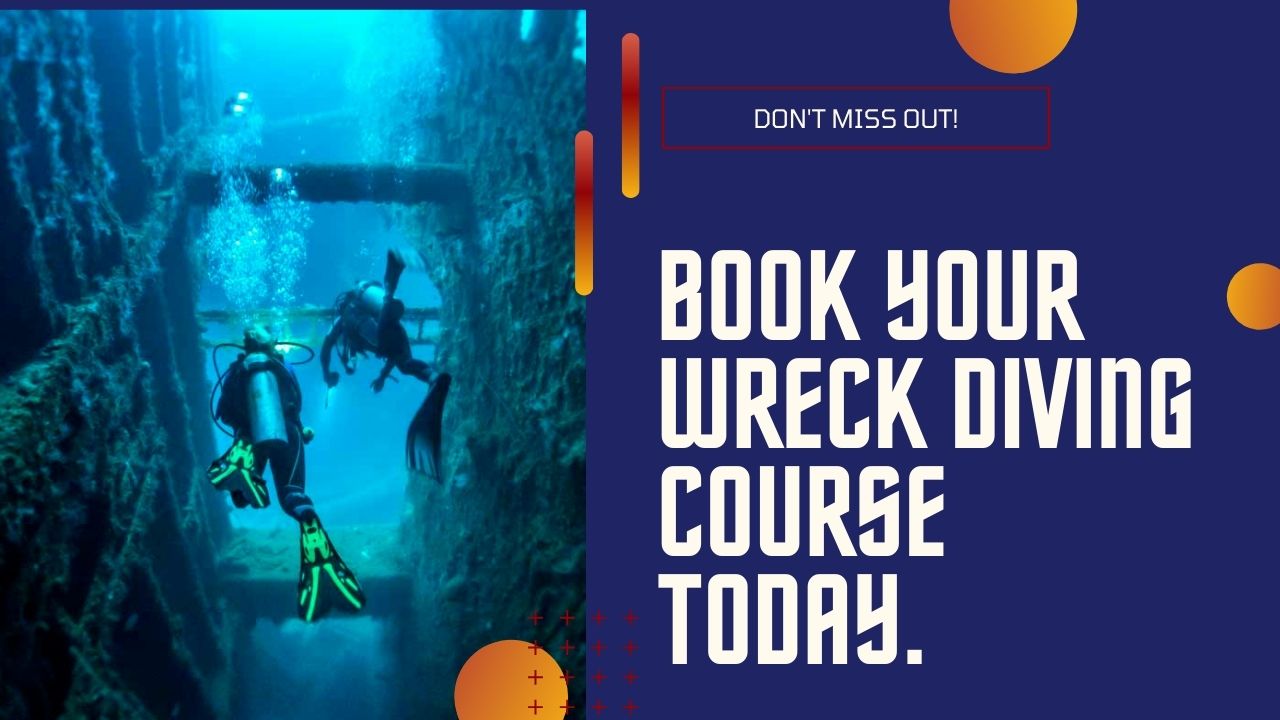You have 0 product(s) in your cart.
Abyss Scuba Diving
What’s Special About Wreck Diving
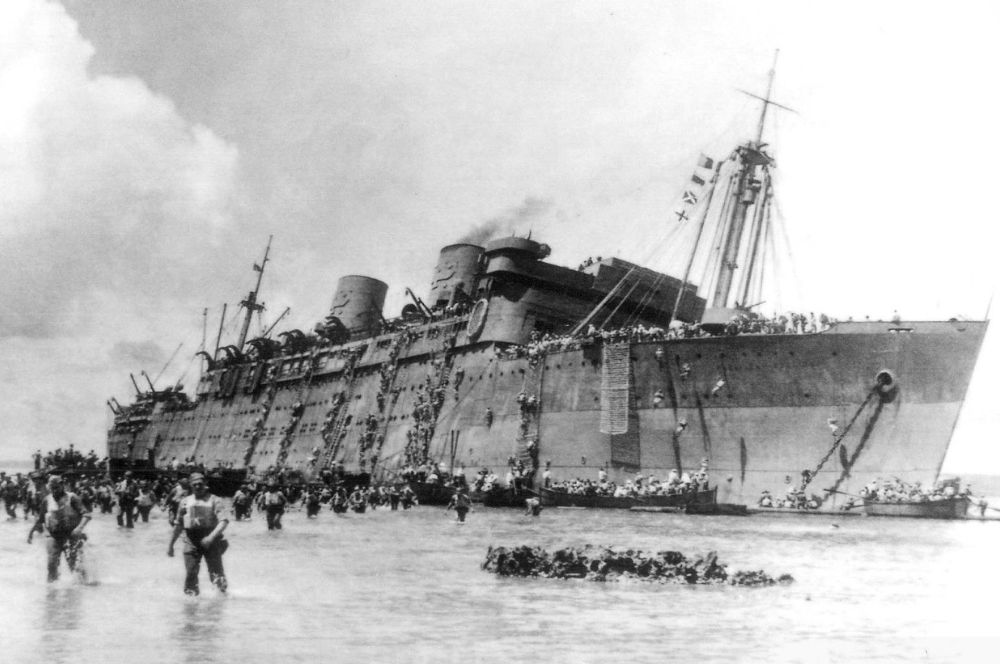
What’s Special About Wreck Diving: Top Global Hotspots for Wreck Diving Enthusiasts
Delving into the depths of oceans and lakes, wreck diving offers a compelling fusion of history, adventure, and underwater biodiversity. This practice isn’t just about the dive; it’s about touching a piece of the past. In this article, we introduce you to the ultimate global wreck diving hotspots where history and marine life converge to create truly mesmerizing underwater landscapes.
Key Takeaways
-
Wreck diving offers a blend of historical exploration, ecological significance, and adventure by allowing divers to encounter underwater time capsules rich in marine heritage and converted into vibrant artificial reef ecosystems.
-
Divers engage in types of wreck dives like non-penetration, limited penetration, and full penetration, each requiring different levels of skill and training, with the latter involving advanced techniques for safety and historical preservation.
-
The practice and evolution of wreck diving are supported by special equipment and technologies that enhance safety and accessibility, and a rich global selection of dive sites provides divers with a variety of unique underwater experiences.
The Allure of Sunken Stories
Wreck diving is not just about visiting underwater ruins; it’s about embarking on a journey into history, ecology, and adventure. Wreck divers are underwater archaeologists, exploring sunken pinnacles that bear testament to maritime heritage. Shipwreck dives give a personal glimpse into the stories of these underwater time capsules, from vessels claimed by wars to those that met their untimely end due to natural disasters. Divers can encounter hidden chambers and experience waterlogged moments frozen in time, adding to the allure of exploration.
Transforming over time, these shipwrecks become the foundation for marine ecosystems to flourish. The HMAS Adelaide, for instance, is now home to diverse marine life and stunning coral formations. This unique blend of history, ecology, and adventure is what makes wreck diving a truly enchanting experience.
The Historical Tapestry Under the Waves
The underwater realm is a treasure trove of historical artifacts, each shipwreck a chapter in the grand narrative of our maritime past. War vessels, cargo ships, and passenger liners all find their final resting place beneath the waves, their stories echoing through time. Some notable war wrecks include:
-
The Truk Lagoon in Micronesia, which has over 60 Japanese warship wrecks from World War II
-
The HMS Vanguard in Scapa Flow, which met its demise in 1917 due to an internal explosion
-
The USAT Liberty off the coast of Bali, which was torpedoed during World War II
These wreck sits are a profound underwater testament to the region’s battle-scarred history.
Yet, the historical tapestry of wreck diving is not limited to the battles of the world wars. Shipwrecks like:
-
the Zanoni, which sank in a freak storm in 1867
-
the SS President Coolidge, which struck mines during World War II
-
the Loch Ard, claimed by waters in 1878
-
the recently discovered Singapore wreck, lost after striking a rock in the late 1800s
showcase the vast span of maritime heritage found beneath the waves. These historic shipwrecks serve as poignant reminders of past maritime disasters.
Whether it’s the remnant of a colonial-era relic or the wreckage of a contemporary vessel, each encounter with a shipwreck provides divers with a unique opportunity to touch history directly, feeling the resonance of stories long submerged.
Marine Life Havens: Artificial Reefs in the Deep
Aside from their historical significance, shipwrecks play a crucial ecological role, transforming into habitats for diverse communities of underwater life and creating new ecosystems. Over time, the remains of these vessels become vibrant artificial reefs, attracting a wide variety of marine life. Some examples include:
-
Small fish seek refuge in the crevices of decaying hulls
-
Larger predators like sharks patrol the waters around these structures
-
Sea turtles and marine mammals find solace in these underwater sanctuaries, with species like white tip reef sharks and loggerhead turtles often spotted around wrecks.
In areas of the ocean with few natural reefs, such as the Gulf of Mexico’s flat continental shelf, shipwrecks serve as essential structures for marine life, providing much-needed habitats. Shipwrecks can also act as stepping stones across the ocean floor, offering temporary homes or resting spots during migration for animals like sand tiger sharks traveling between destinations. The transformation of a shipwreck into an artificial reef is a remarkable testament to nature’s resilience and adaptability, a living tapestry of life woven around the remnants of human history.
Treasure Hunting: The Modern Quest for Underwater Riches
While the historical and ecological allure of wreck diving is undeniable, the thrill of treasure hunting adds an extra dash of excitement to the adventure. Who doesn’t dream of stumbling upon a chest of gold doubloons or a priceless artifact while exploring a sunken ship? The desire to discover and explore the unknown, including missing ships that have remained elusive over time, drives many wreck divers.
The chance of finding sunken loot within shipwrecks serves as a powerful motivation, providing an additional sense of excitement and adventure that heightens the passion for discovery inherent in wreck diving.
Navigating the Depths: Types of Wreck Dives
As with any adventure, wreck diving comes with varying degrees of challenge and risk. These underwater explorations can be categorized into three types: non-penetration, limited penetration, and full penetration diving. Each type of dive offers a different experience and requires different levels of skill and training.
Whether you choose to marvel at these underwater giants from a safe distance or dare to delve into their hidden chambers will depend on your training, experience, and of course, your thirst for adventure.
Shallow Wonders: Non-Penetration Wreck Diving
Non-penetration diving, as the name suggests, is all about exploring the exterior of a shipwreck. This type of diving is ideal for beginners or those without specialized training, as it does not involve entering the structure where most hazards are present. Many popular shallow wrecks for non-penetration diving are located in clear, warm waters which enhance the visual experience and reduce risks for divers. For instance, the Fujikawa Maru in Truk Lagoon, Micronesia, is a shallow wreck suitable for less experienced divers, with depths ranging from 5 to 35 meters and surrounded by calm waters. The Jake Seaplane in Palau, Micronesia, is another example of an intact WWII Navy Seaplane wreck resting at a depth of 15 meters, ideal for non-penetration diving.
Non-penetration diving allows divers to:
-
Observe shipwrecks from the safety of the open water
-
Admire the ship’s structure
-
See the marine life that has made the wreck their home
-
Take in the grandeur of these sunken giants without venturing into their interiors
It’s an excellent way to get a taste of wreck diving, especially for those who are new to the sport or those who prefer to stay within their comfort zone.
The Inner Sanctum: Limited Penetration Diving
Limited penetration diving is a step up from non-penetration diving. This type of dive allows divers to enter the wreck while ensuring the exit point remains visible at all times. It strikes a balance between the safety of remaining outside and the excitement of inner exploration. Divers must be trained to plan and carry out limited penetration diving with a focus on areas where natural light is still present, using tools like wreck reels to navigate back to the entrance.
Limited penetration allows divers to closely observe shipwrecks’ major components like engine rooms and machinery, offering insights into the vessel’s operational history and tragic sinking. It’s a thrilling experience that brings divers closer to the heart of the ship and its story. However, it’s important to note that this type of diving requires additional skills and training, and should not be attempted without proper preparation and guidance.
Into the Abyss: Full Penetration for the Experienced Diver
Full penetration diving is the ultimate thrill for seasoned divers. This type of diving involves navigating a wreck’s internal spaces, an endeavor that demands advanced training due to its complexity and potential hazards. Before attempting an advanced penetration dive, divers must engage in thorough planning to ensure safety and preparedness. Advanced techniques such as guideline deployment, following, and retrieval are taught to help manage the risks associated with silt and poor visibility during full penetration dives.
This level of diving is not for the faint-hearted. It requires extensive knowledge, skill, and confidence. But for those who are up for the challenge, full penetration diving offers:
-
An unparalleled experience
-
A journey into the very heart of the shipwreck
-
A chance to explore the unseen
-
A chance to touch the untold stories that lie within
Essential Gear for the Wreck Explorer
Just as a knight wouldn’t venture into battle without his armor, a wreck diver mustn’t embark on a dive without the proper gear. Wreck diving requires special equipment to ensure divers’ safety and the success of their exploration. This includes basic gear like cutting devices for entanglement and spare lights for low visibility, and advanced gear like wreck reels for navigation and lift bags for potential heavy object lifting.
The Basic Toolkit: Must-Haves for Every Wreck Diver
Every wreck diver needs a basic toolkit for safe and effective diving. At its core, this toolkit should include cutting devices, lights, and appropriate exposure protection. Dive knives and cutting tools are essential for navigating potential entanglements. These tools should feature both a straight edge and a serrated edge, while cutting devices like sidecutters or lineman’s pliers are handy for handling tougher materials, [3.1_1]].
Lighting is another crucial component of the basic toolkit. Dive lights, including a primary light and backups, are critical for navigation and visibility within the dark areas of a wreck.
As for exposure protection, a high-performance regulator and modern scuba suits with thermal technology are vital wearables for deep wreck diving. These basic pieces of equipment help ensure that divers can safely enjoy their wreck diving adventures.
Advanced Equipment for Penetration Diving
As divers progress from non-penetration to penetration diving, they’ll need to add some extra gear to their toolkit. Advanced penetration diving requires additional gear such as wreck reels to mark a safe exit path, lift bags for potential heavy object lifting, and redundant air sources to ensure an adequate supply of breathing gas. Wreck reels are a vital piece of equipment for mapping routes inside wrecks, especially in low visibility conditions, and are essential for safe navigation by allowing divers to retrace their paths.
Lift bags serve multiple functions in penetration diving, including marking routes, lifting objects, and signaling the surface; tension control on reels can aid in the precise movement of lift bags to the surface. The most challenging form of wreck diving involves full-penetration into areas devoid of natural light, which increases hazards such as disorientation and air depletion, necessitating the use of specialized equipment.
Technical Additions for the Deepest Descents
Technical diving for deeper wrecks may require even more specialized equipment. For example, technical diving, which includes the use of mixed gases like trimix, enables technical divers to reach deeper wreck sites that were previously inaccessible. Carrying decompression gases can be challenging during wreck penetration, which is managed by placing stage cylinders along the dive route for accelerated decompression.
The use of decompression software and personal dive computers is key to monitoring tissue gas saturation and ensuring appropriate decompression stops during ascent. Decompression equipment like Jon lines, surface decompression chambers, and surface marker buoys are essential in managing safety and facilitating communication during deep wreck dives. It’s clear that the right gear plays a critical role in ensuring the safety and success of any wreck dive.
World-Renowned Wreck Dive Sites
Around the world, there are numerous wreck dive sites that beckon divers with their unique stories and diverse attractions. From warships to cargo vessels, these sites provide glimpses into our maritime past and offer unforgettable underwater experiences.
Whether it’s the cargo of the SS Thistlegorm in Egypt or the sunken fleet in Scapa Flow’s Orkney Islands, each dive site has a unique tale to tell and a unique adventure to offer.
SS Yongala: Australia's Iconic Dive Site
Off the coast of Queensland, Australia, rests the SS Yongala, a historic shipwreck that has become a popular dive site. Known for its abundance of marine life, the SS Yongala wreck is covered in both hard and soft corals. With over 1000 ships wrecked off the coast of Queensland, the SS Yongala is one of the many submerged stories in the region. The depths around the SS Yongala range from 16 meters to 33 meters, making it accessible for a range of diving experiences, from non-penetration dives to limited penetration dives.
Exploring the SS Yongala offers divers a chance to witness a vibrant marine ecosystem that has developed around the wreck. From schools of fish swirling around the wreck to coral formations clinging to its structure, every dive at the SS Yongala offers a unique spectacle of life and history intertwined.
Scapa Flow's Sunken Fleet: Orkney Islands' Underwater Battlefield
In the Orkney Islands of Scotland lies Scapa Flow, a wreck dive site that’s steeped in history. Home to over 70 warships from the German Imperial Navy’s High Seas Fleet, scuttled in 1919, Scapa Flow offers a rich layer of history for divers. Divers here can explore a variety of WWI-era German naval vessels, including the König class battleship SMS Markgraf and the light cruiser SMS Dresden.
Each dive at Scapa Flow is a dive into history, offering a poignant reminder of the battles fought and the lives lost. The wrecks here have become silent memorials to the past, providing a unique and meaningful experience for every diver.
Red Sea Revelations: Egypt's Time Capsules
In the warm waters of the Red Sea, off the coast of Egypt, lies the wreck of the SS Thistlegorm. Known for its historical significance and exceptional preservation, the SS Thistlegorm offers a well-preserved glimpse into World War II-era cargo and marine life. Divers visiting the SS Thistlegorm can still observe a fascinating assortment of World War II-era cargo, including:
-
tanks
-
trucks
-
jeeps
-
motorcycles
-
a locomotive
All well-preserved in the underwater environment.
Beyond its historical artifacts, the SS Thistlegorm also offers:
-
A vibrant marine life
-
Varied underwater landscapes, including its exterior features like the stern, propeller, and anti-aircraft guns
-
An enriching non-penetration diving experience
Whether you’re a history buff, a marine life enthusiast, or just an adventurous diver, the SS Thistlegorm offers something for everyone.
Preparing for Your First Wreck Dive
Stepping into the world of wreck diving requires careful preparation and the right mindset. As with any form of scuba diving, safety should always be the top priority. This is particularly crucial in wreck diving due to the unique challenges and potential hazards that these environments present.
From mastering buoyancy control to learning to navigate overhead environments safely, there’s a lot that goes into preparing for your first wreck dive.
Training and Certification: Building a Foundation of Safety
Proper training and certification provide a solid foundation for a safe and enjoyable wreck diving experience. Wreck specialty training courses are designed to teach divers about responsible wreck diving practices and safety measures. The PADI Wreck Diver Specialty course, for instance, is designed to educate divers on the ins and outs of exploring wrecks, understanding their histories, and learning responsible wreck diving practices, including legal and ethical considerations.
These courses not only teach divers technical skills such as the proper use of guidelines and reels and the ability to safely explore wreck interiors, but they also emphasize practice with qualified divers. With prerequisites like being at least 15 years old and having earned a PADI Adventure Diver certification, this course paves the way for more advanced training for full penetration dives.
Respecting Our Maritime Past: Ethical Considerations
Wreck diving isn’t just about the thrill of exploration; it’s also about respecting our maritime past. Shipwrecks are legally protected in many countries to prevent unauthorized salvage and desecration of the sites. For example, in South African waters, shipwrecks are protected under the National Heritage Resources Act number 25 of 1999. Ethical wreck diving involves a commitment to preserving underwater sites by minimizing the environmental impact during dives.
Divers are expected to respect wreck sites by not touching or removing artifacts which are recognized as part of cultural heritage and possibly subject to legal protections. By adhering to these ethical considerations, divers can contribute to the preservation of dive sites, including wrecks, and help protect our shared maritime heritage for future generations.
Advanced Techniques for Seasoned Divers
For seasoned divers, wreck diving opens up a world of advanced techniques and skills. Navigating overhead environments, such as the inside of shipwrecks, presents unique challenges and potential hazards, requiring advanced training and knowledge. From conducting meticulous pre-dive checks and performing stress analysis to ensuring effective team communication, every dive demands a high level of skill and expertise.
Mastering Wreck Navigation: Tips and Tricks
Mastering wreck navigation is crucial for a successful and safe dive. Using tools like wreck reels and guidelines can help divers navigate their way in and out of a wreck, even in reduced visibility conditions. Underwater slates, marker buoys, and directional markers like line arrows and cookie markers assist in mapping and marking the wreck for navigation and communication.
Seasoned divers are trained to adapt to the upside-down or sideways orientation of wrecks, as these can cause disorientation and affect visibility within the structure. Courses teach divers to handle these different wreck environments, applying principles learned to navigate safely despite the complexity and condition of the wreck. From maintaining proper trim and buoyancy to mastering propulsion techniques, every aspect is critical to avoid incidents like silt-outs, which can quickly reduce visibility. Some key skills for navigating wrecks include:
-
Adapting to different orientations
-
Maintaining proper trim and buoyancy
-
Mastering propulsion techniques
-
Using a dive light to improve visibility
-
Communicating effectively with your dive buddy
By mastering these skills, advanced divers, including scuba divers, can explore wrecks safely and enjoy the unique experience they offer.
Dealing with Hazards: Silt, Entanglement, and Beyond
Diving into a shipwreck is an adventure, but it also comes with its share of hazards. From the instability of shipwrecks to the presence of sharp objects and debris underwater, divers face unique challenges that require proper training and adherence to guidelines. Part of this training includes mastering buoyancy control and learning to safely navigate overhead environments with no direct ascent.
One of the most common risks in wreck diving is silt-out, a situation where visibility is reduced due to disturbed silt. This risk can be managed by using a guideline for navigation, carrying primary and backup lights, and mastering techniques to maintain orientation and visibility.
Another common risk is entanglement, which can be caused by materials like fishermen’s nets, electrical wiring, and even divers’ own guidelines. To manage this risk, divers should always carry a cutting tool, such as a dive knife, for safety.
The Evolution of Wreck Diving
Wreck diving, as we know it today, has come a long way from its origins. From salvage operations to recreational exploration, the evolution of wreck diving is a testament to our enduring fascination with the underwater world and the stories that lie beneath its surface.
From Salvage Operations to Recreational Thrills
Wreck diving originated from the commercial activities of professional divers involved in salvage, accident investigation, and archaeological survey. Over time, the fascination with marine life inhabiting wrecks, the thrill of exploring sunken structures, and the allure of wrecks’ historical narratives influenced diving’s commercial to recreational transition.
Today, wreck diving has expanded from non-penetration dives to more complex endeavors, such as limited and full penetration dives. This evolution has been made possible by advancements in diving technology and training, making wreck diving a distinct niche within the broader scuba diving community. In response to the rising popularity of wreck diving, the deliberate sinking of retired vessels to form new artificial reefs has emerged, providing additional sites for divers to explore.
Technological Innovations Enhancing the Experience
Technological advancements have played a significant role in the evolution of wreck diving. The invention of the demand regulator and improved scuba systems in the 1940s made underwater exploration more accessible and practical. Today, advanced technologies like rebreathers and buoyancy control devices have further enhanced divers’ underwater endurance and control, making it possible to explore complex wrecks that were once out of reach.
The future of wreck diving looks promising, with the introduction of wearable technology, AI-powered safety systems, and sustainable materials. Underwater communication systems using ultrasonic waves have improved the effectiveness of diver communication, a boon for coordinating complex wreck dives. These technological innovations are making diving safer and more accessible, opening up new possibilities for exploration and discovery.
Summary
Wreck diving is an exciting and enriching experience that combines the thrill of exploration, the beauty of marine life, and the resonance of maritime heritage. From the shallow wonders of non-penetration diving to the thrilling depths of full penetration dives, each dive offers a unique adventure. As we’ve seen, proper training, appropriate gear, and a respect for our maritime past are critical for a safe and enjoyable wreck diving experience. So, whether you’re drawn to the historical tapestry under the waves, the thriving marine life havens, or the thrill of potential treasure hunting, the world of wreck diving awaits you. Dive in and uncover the sunken stories that lie beneath the surface.
Frequently Asked Questions
Can you dive in shipwreck?
Yes, shipwreck diving can be an exciting and rewarding experience for both recreational and technical divers, offering a glimpse into the past and an understanding of the fragility of sailing the seas.
Is shipwreck diving safe?
Shipwreck diving can be safe if divers take precautions to avoid hazardous marine life, which can pose a risk during wreck dives. It's important to be mindful of potential dangers and take necessary steps to mitigate risks.
How do you qualify for wreck diving?
To qualify for wreck diving, you need to be at least 15 years old and have a minimum PADI Adventure Diver certification or its equivalent, and complete the required enrollment forms. This ensures you meet the prerequisites for the PADI Wreck Diver Specialty Course.
How deep is wreck diving?
Wreck diving often involves exploring wrecks lying in deep water, generally below 18 meters, and may include penetrating the interior of the wreck. So, it can take you to depths of more than 18 meters to explore wrecks and their interiors.
What makes wreck diving special?
Wreck diving is special because it allows divers to explore history underwater and be a part of the story of a shipwreck, as well as search for lost treasure. It's a unique way to connect with the past and explore underwater mysteries.
SHIPWRECK RELATED POSTS
-
Explore the Aquatic Spectacle: Ultimate…
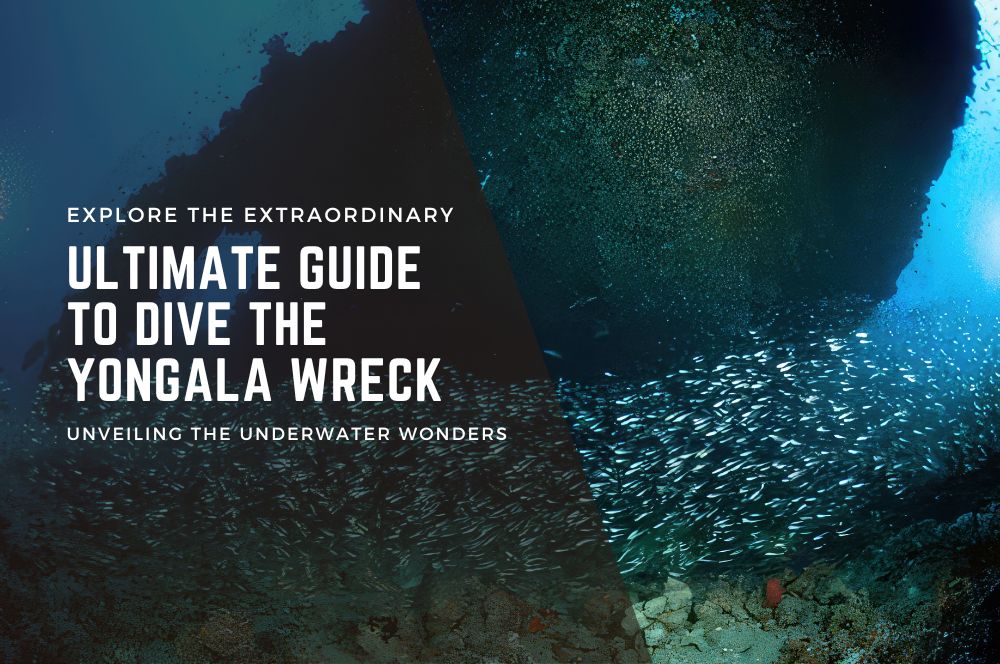
Explore the Aquatic…
Explore the Aquatic Spectacle: Ultimate Guide to Dive Yongala Wreck Plunging into the Dive Yongala experience […] -
Exploring the Depths: A Guide to the…
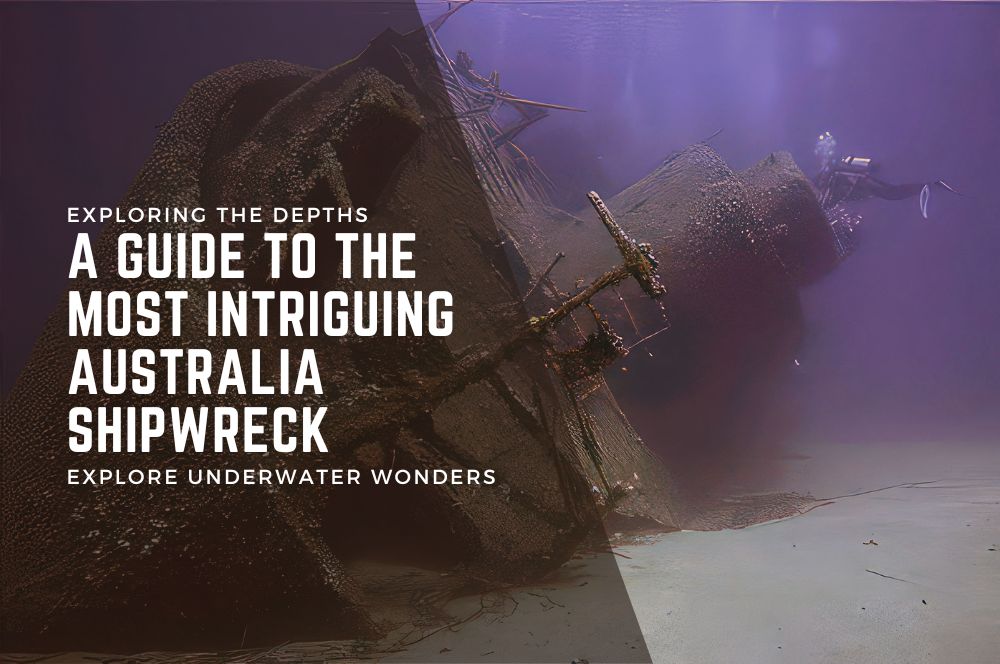
Exploring the Depths:…
Exploring the Depths: A Guide to the Most Intriguing Australia Shipwreck Sites Australia’s maritime […] -
From Glory to Abyss: Unraveling Legacy…
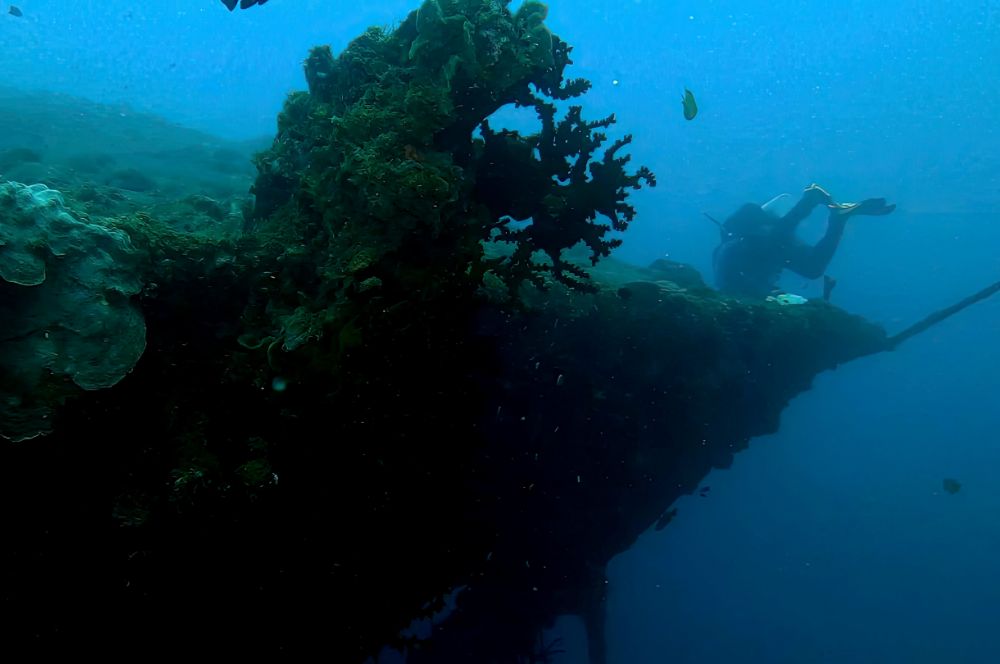
From Glory to Abyss:…
From Glory to the Abyss: The Unraveling Legacy of the SS President Coolidge From a symbol of luxury and elegance […] -
Discover Sydney Harbour's Key Wrecks…

Discover Sydney Harbour's…
Diving into the History of Sydney Harbour's Key Wrecks Did you know Sydney Harbour is home to an underwater […]
Recent Posts
